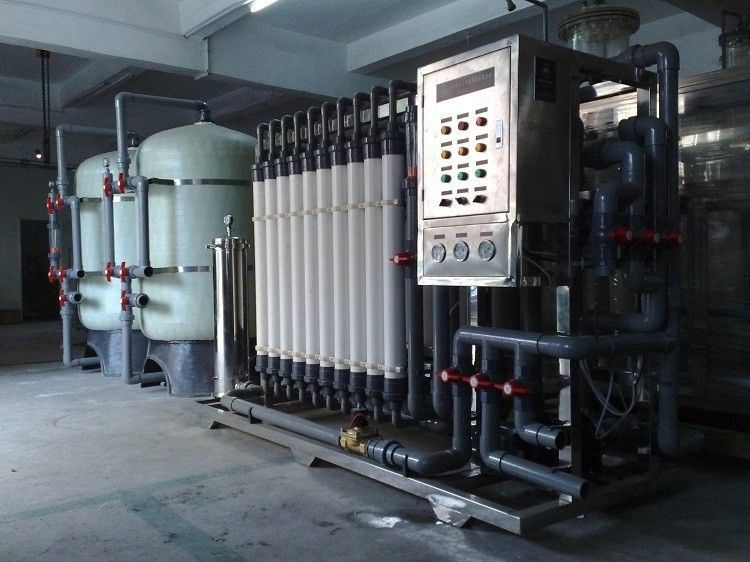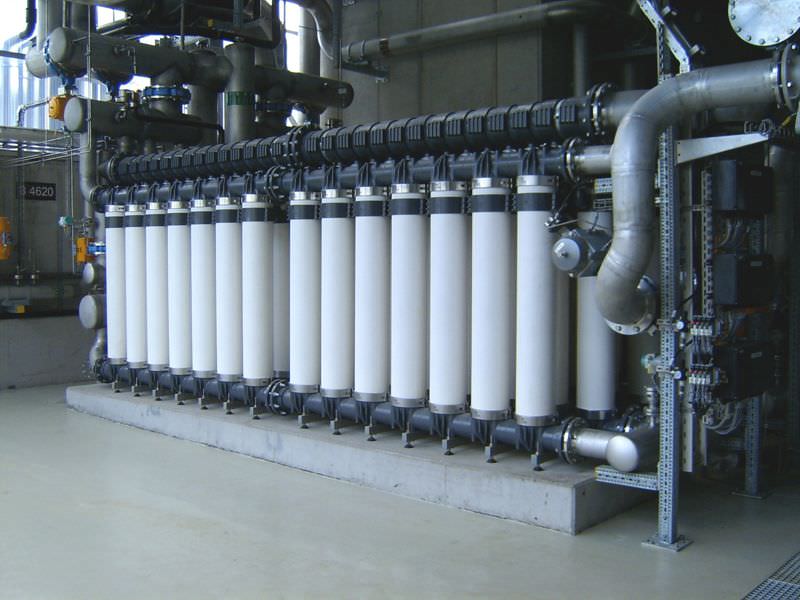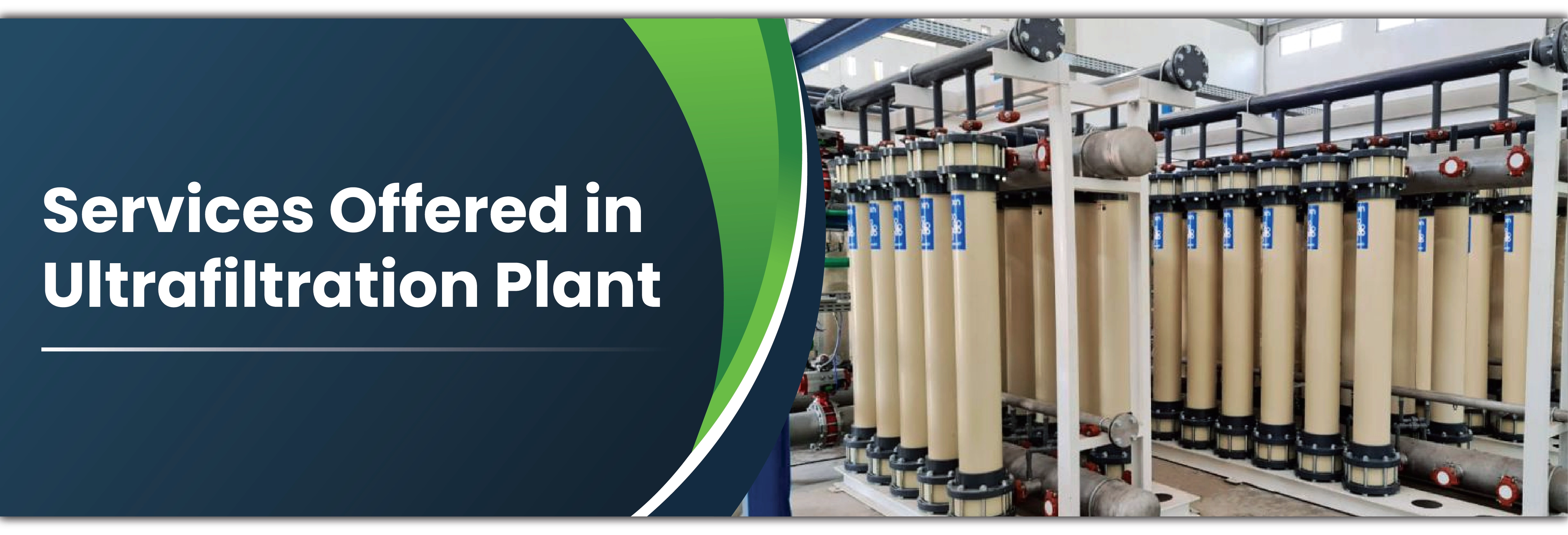Ultrafiltration Plant
We are a leading name in the field of offering Ultra Filtration Plants. These systems offer tangential flow pressure driven filtration process that help in efficiently separating particles on basis of their molecular sizes. With pore diameters of ultra filtration membranes being in range of 10 to 200 A, solvents and species that have diameters smaller than pore size of membrane passes through membrane and emerge as ultra filtrate (permeate). The particles that are rejected are progressively concentrated in retained stream.
We offer Ultra filtration Plants that are reusable and cleanable with standard chemicals and are designed using advanced process technology with the purpose of removing micro bacterial counts. These Ultra filtration Control Systems act as advanced Industrial Filtration System and find application as pre treatment step to the next in step reverse osmosis process.



Membrane Technology
Ultrafiltration is used for the separation of suspended solids, colloids, bacteria and virus. This technique uses membranes with pore size between 1-100nm.
| TECHNIQUE | MWCO* (Da) |
|---|---|
| Microfiltration | >105 |
| Ultrafiltration | 103-105 |
| Nanofiltration | 102-104 |
| Reverse osmosis | 102 |
As the difficulty has been arising in continous removal of tiny particles using conventional watertreatment, and increased concerns about chlorine-resistant organisms, ultrafiltration is gaining popularity and becoming the preferred method of choice for municipal water treatment plants.
Ultrafiltration is very effective at removing very small particles which can quickly foul reverse osmosis membranes, and then resulting in reducing the silt density index of the water. For this reason, it frequently serves as pre-treatment for surface water, seawater, and biologically treated municipal water upstream of RO.
In ultrafiltration, thewater flow is directed through a membrane in a cross flow direction, and a portion of input water flows across the surface of the membrane at a precise rate of flow and pressure. This allows most contaminant stuffs to be removed, but also allows the membrane surface to stay clean, and eliminating the fouling that can leave other systems ineffective until manual cleaning occurs.
UF is particularly meant and effective for discarding the colloid (emulsion). It is an effective pre-treatment to Reverse Osmosis used in desalination.It can also be used as a pre-treatment for water that will go through a reverse osmosis system. Water that has been through the ultra-filtration process can also be used as drinkable water in hotels, resorts, recreational centres and the like.
The following applications use the contaminant-free water resulting from the ultra-filtration process: These include -
-
Private Water Supplies
-
Engineering Activities
-
Bood Processing
-
Brewing and Distillery, etc
Applications
Ultrafiltration process removes the highest sensitivity of conventional plant treatment steps of coagulation, sedimentation and filtration to variable influent turbidity and particle charges.UF is also taken into useby industries to separate suspended solids from solution. Industrial applications include power generation, food and beverage processing, pharmaceutical production, biotechnology, and semiconductor manufacturing. Examples of industrial applications include:
-
Washwaters – Tramp Oils, Alkaline & Acidic Washwaters
-
Stamping - Heavily Fortified Stamping Fluids & Washwaters
-
Transportation - Oily Water from Vehicle Discharge
-
Machining and Grinding - Water Soluble and Synthetic Coolants
-
Die Casting - Mould Release Fluids & Washwaters
-
Vibratory Deburring - Oil and Solid Laden Deburring Liquids
-
Primary Metals - Rolling & Drawing Fluid, Coolants
How UF Works?
Empty/hollow fibres of membrane material is used in ultrafiltration and the feed water flows either inside the shell, or in the lumen of the fibres. What is retained is the suspended solids and particles of high molecular weight, on the other hand, water and low molecular weight solutes pass through the membrane. Ultrafiltration is somewhat similar to reverse osmosis, microfiltration or nanofiltration, except in terms of the molecule size it retains. When comparing and strategically combining with other purification technologies in a complete water system, UF is ideal for the removal of colloids, proteins, bacteria, pyrogens, proteins, and macromolecules larger than the membrane pore size from water.
Ultrafiltration Removes
Ultrafiltration Plant (UF Plant)
Ultrafiltration Plant - FAQ
Q1. What Is Ultrafiltration (UF)?
Ans. Ultrafiltration (UF) is a water purification method that involves forcing water through a semipermeable membrane. Suspended particles and high-molecular-weight solutes remain on the retentate side of the membrane, while water and low-molecular-weight solutes filter through to the permeate side.
Q2. How does an ultrafiltration system work?
Ans. Ultrafiltration systems function similarly to other types of water filtration systems. Water runs through a sediment filter, capturing particulate with the porosity of the filter. An ultrafiltration system works in the same way as a sediment filter, except that it filters anything larger than 0.025 micron, which is substantially larger than a sediment filter. We usually add a carbon filter to the system to remove undesirable taste and odour as well as suspended solids. Ultrafiltration systems are classified into two categories.
- Point-of-use: They are commonly seen in under-the-counter drinking water systems.
- Point-of-entry: They are commonly used to run water for purposes that do not require finely filtered water.
Q3. How do you install an ultrafiltration system?
Ans. Ultrafiltration systems are easy to set up. This equipment easily connects to a system line, allowing water to flow through the filters and ultrafiltration membrane. The out-line is then connected to a faucet. A dedicated faucet is usually the best way to distribute water from an ultrafiltration system, although it is still straightforward to install.
Q4. What is the application of ultrafiltration (UF)?
Ans. To create potable water, UF can be used to remove particles and macromolecules from raw water. It has been utilised to replace conventional secondary (coagulation, flocculation, sedimentation) and tertiary filtration (sand filtration and chlorination) systems in water-treatment plants, as well as standalone systems in remote areas with expanding populations.
Q5. What is the difference b/w an ultrafiltration system and a reverse osmosis system?
Ans. An ultrafiltration system can remove most solid particles from fluids, but it cannot remove dissolved particulates like a reverse osmosis system. An ultrafiltration system, on the other hand, can filter smaller particulates than a microfiltration or ordinary carbon filter.










